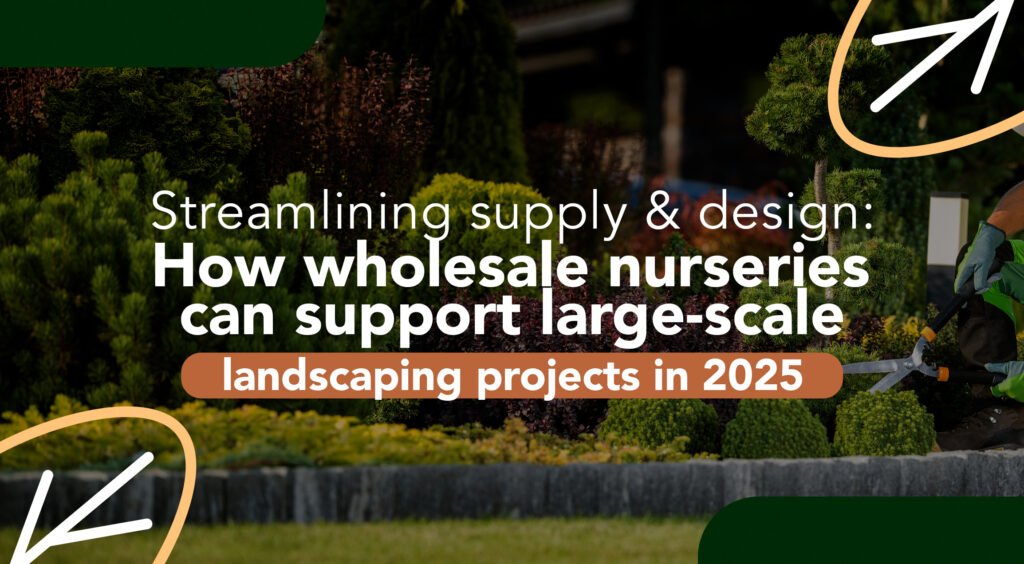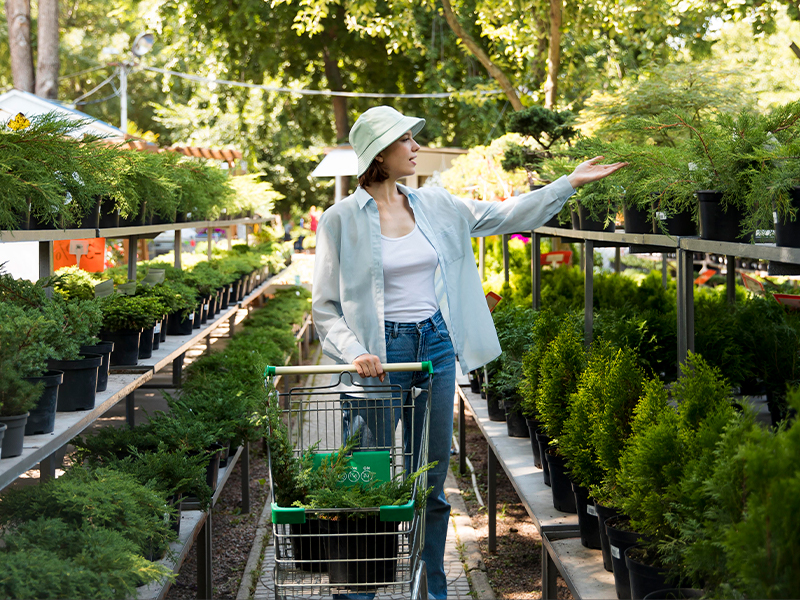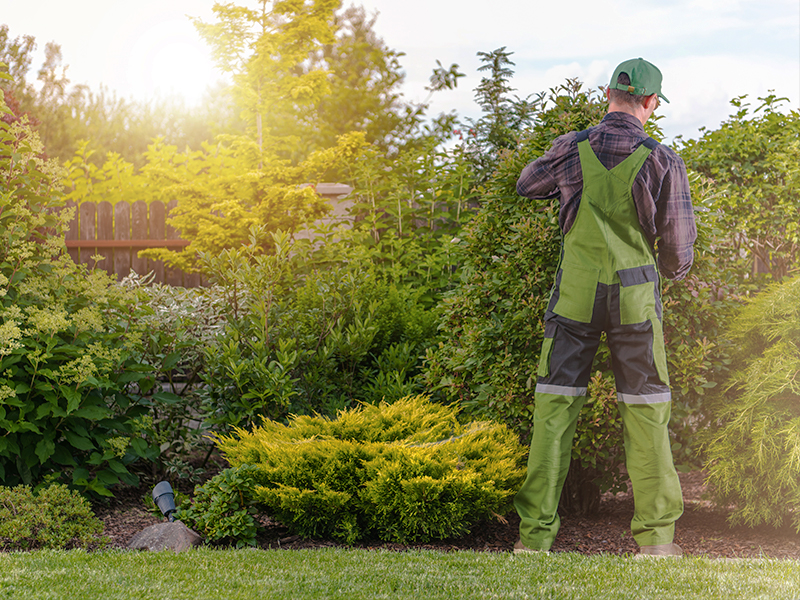Streamlining Supply and Design: How Wholesale Nurseries Can Support Large Scale Landscaping Projects in 2025

Introduction
The Growing Demand for Scalable Green Solutions
In 2025, demand for large-scale landscaping projects urban parks, commercial developments, public spaces, and residential communities is on the rise. Landscape architects, designers, and contractors are tasked with delivering beautiful, sustainable results on tight timelines and tighter budgets. At the heart of these efforts are wholesale nurseries.
This blog explores how nurseries can elevate their role from supplier to strategic partner, helping professionals meet project specs, timelines, and environmental goals through smarter plant sourcing, inventory planning, and communication.
1. Planning Starts with Partnership: Collaborative Design Reviews
Landscape architects and designers work months sometimes years ahead of installation. The earlier nurseries are looped into the design process, the better the outcomes.
1. What Nurseries Can Do:
- Offer plant availability lists for upcoming seasons
- Recommend substitutes for hard-to-source species
- Alert designers to lead times for specific trees or large specimens
- Share growing schedules for contract grows
Early collaboration reduces last-minute substitutions and ensures that landscape professionals spec plants that are available, affordable, and climate-appropriate.



2. Contract Growing: The Smart Solution for Long-Term Projects
Large developments and municipal contracts often need consistent plant material across multiple phases. Contract growing solves availability issues before they happen.
Benefits for Architects & Landscapers:
- Guaranteed stock of specific cultivars, sizes, and quantities
- Predictable pricing
- Uniform quality across planting phases
Benefits for Nurseries:
- Predictable revenue stream
- Better production planning
- Stronger client relationships
If you’re a nursery, offering custom grows with scheduled delivery windows can set you apart from competitors.
3. Volume, Consistency, and Quality: What Professionals Expect
When landscape professionals place a large order, they expect consistency in:
- Plant size and maturity
- Health and structure
- Pot size and labeling
- Root development and transport readiness
Inconsistent stock slows installation and frustrates clients.



4. Logistics Matter: Timely Delivery & Site Support
For large jobs, logistics can make or break the schedule. Professional crews rely on deliveries arriving on time, with clear labeling, accurate manifests, and sometimes even staging by area.
Smart Practices for Nurseries:
- Offer scheduled deliveries by section or zone
- Provide load sheets with quantity, location, and plant ID
- Coordinate with foremen or installation crews on delivery days
- Use climate-controlled or shaded transport for sensitive species
Delivering well means fewer delays, fewer plant losses, and repeat business.
5. Specialization: Native, Drought-Tolerant & LEED-Compliant Plants
Municipalities and commercial developers increasingly require plant selections that are:
- Native or adaptive to local conditions
- Low water use or drought-tolerant
- Aligned with LEED or SITES sustainability standards
Opportunities for Nurseries:
- Specialize in native species for your region
- Curate “LEED-ready” plant lists
- Educate buyers with labels or brochures on eco-benefits
6. Landscape Trends Driving Bulk Plant Sales in 2025
Certain trends are increasing the volume of plant material needed for projects:
- Green Infrastructure: Tree-lined streets, stormwater planters, and bioswales
- Multifunctional Landscapes: Edible + ornamental blends
- No-Mow & Habitat Zones: Native grasses and pollinator plants
- Rewilding & Resilient Design: Fewer lawns, more structure and succession plantings
Top Sellers for Bulk Jobs in 2025:
- Schizachyrium scoparium (Little Bluestem)
- Rudbeckia fulgida, Echinacea purpurea
- Quercus and Acer species (larger tree installations)
- Amelanchier, Aronia, and Cornus for multifunctional borders
Wholesale buyers are looking for scalable, ready-to-install plants that support both performance and aesthetics.
7. Digital Tools: The Modern Specifier’s Best Friend
Designers and contractors expect nurseries to keep pace with tech:
- Digital availability lists (real-time updates)
- Photos and specs downloadable from the nursery’s website
- Integration with CAD or plant library tools
- Digital order tracking and invoicing
If You’re a Nursery:
Invest in a professional, up-to-date catalog that can be accessed online and used in spec-writing and client presentations.

Conclusion: Wholesale Nurseries Are Design Allies
2025 is an exciting and fast-paced time for the green industry. Professional landscapers and designers need more than plants—they need informed, proactive partners. Wholesale nurseries that understand their clients’ workflow and provide scalable solutions will remain at the center of successful large-scale landscape design.
From contract growing to curated plant packages and delivery support, now is the time to position your nursery not just as a vendor, but as an essential part of the creative and installation team.




